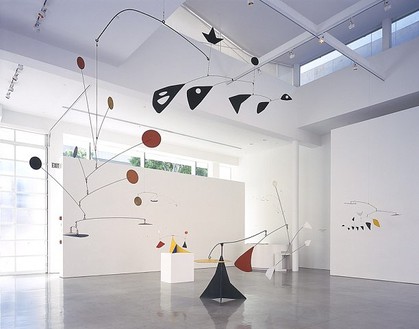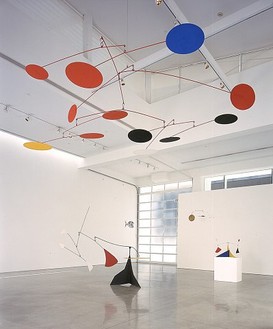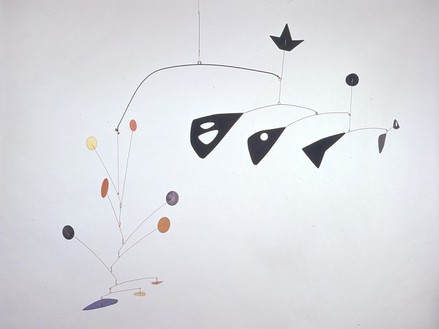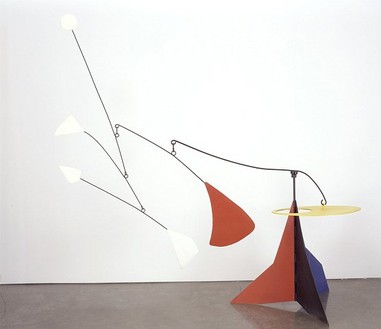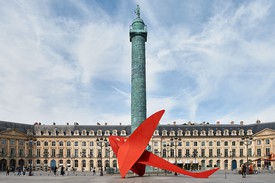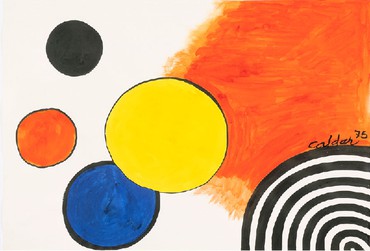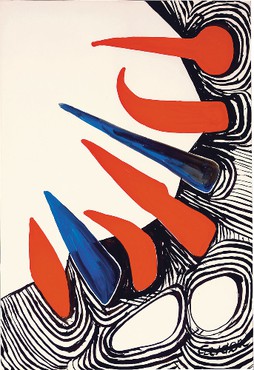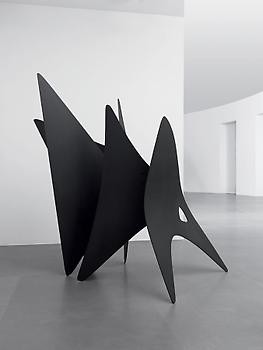About
"A mobile is an abstract sculpture made chiefly out of sheet metal, steel rods, wire, and wood. Some or all of these elements move, propelled by electric motors, wind, water or by hand…When everything goes right a mobile is a piece of poetry that dances with the joy of life and surprise."
-Alexander Calder
Gagosian Gallery is pleased to present a seminal range of hanging and standing mobile sculptures by Alexander Calder. The exhibition will span the second chapter of the artist's career and his fascination with sculpture in motion.
The works on view will include important examples of standing and hanging mobiles, inspired by man and nature alike, sight and sound, reality and fantasy. Flocons de neige (1970) representing a quiet snow flurry, or Blue Crescent and Gong (1953) making reference to primitive man-made musical instruments; or perhaps there is no meaning at all as Jean-Paul Sartre suggested, "They have too many possibilities and are too complex for the human mind, even their creator's, to predict their combinations. Calder established a general destiny of motion for each mobile, then he leaves it on its own." ("Existentialist on Mobilist", ARTnews, Dec 1947)
In addition to the standing and hanging mobiles, a Crag piece, Crag with red heart (1974) and Calder's Fish (1952), will also be on view. The exhibition presents a variety of Calder's mobile formulas, each piece composed of an eclectic range of materials such as sheet metal, rods, wire and wood, pieces of glass and porcelain, string and other found objects.
Whether seen up close or at a distance, Alexander Calder's art seems to possess both a touch of magic and witchcraft, never precisely still, never exactly the same.
Share
Artist
Download
Behind the Art
Alexander Calder: Flying Dragon
In this video, Gagosian director Serena Cattaneo Adorno celebrates the installation of Alexander Calder’s monumental sculpture Flying Dragon (1975) at Place Vendôme in Paris, detailing the process and importance of this ambitious project.
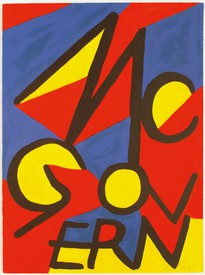
The Art History of Presidential Campaign Posters
Against the backdrop of the 2020 US presidential election, historian Hal Wert takes us through the artistic and political evolution of American campaign posters, from their origin in 1844 to the present. In an interview with Quarterly editor Gillian Jakab, Wert highlights an array of landmark posters and the artists who made them.

An Alphabetical Guide to Calder and Dance
Jed Perl takes a look at Alexander Calder’s lifelong fascination with dance and its relationship to his reimagining of sculpture.
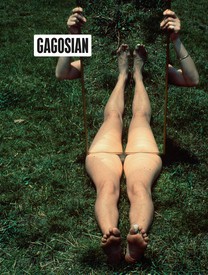
Now available
Gagosian Quarterly Summer 2020
The Summer 2020 issue of Gagosian Quarterly is now available, featuring Joan Jonas’s Mirror Piece 1 (1969) on its cover.

The New World of Charlotte Perriand
Inspired by a visit to the Fondation Louis Vuitton’s exhibition Charlotte Perriand: Inventing a New World, William Middleton explores the life of this modernist pioneer and her impact on the worlds of design, art, and architecture.
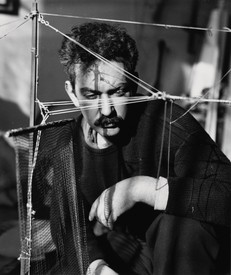
Calder: Sculpting A Life
The first authorized biography of Alexander Calder was published this past fall. Biographer Jed Perl and Alexander “Sandy” S. C. Rower, president of the Calder Foundation, discuss the genesis of the book, the nature of genius, and preview what’s to come in the second volume with the Quarterly’s Wyatt Allgeier.
